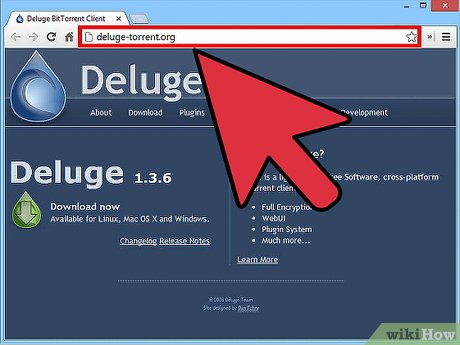

- #Deluge torrent windows how to
- #Deluge torrent windows install
- #Deluge torrent windows update
- #Deluge torrent windows code
- #Deluge torrent windows password
#Deluge torrent windows code
If starting the console gives you an error code instead of nice cleanly formatted console interface, type “exit” and then make sure you’ve started up the daemon. Then, start up the daemon and console again: deluged deluge-console When you’re done editing, hit Ctrl+X on your keyboard and save your changes when prompted.

So for our purposes, we used pi:raspberry:10.
#Deluge torrent windows password
Where user is the username you want for Deluge, password is the password you want, and the level is 10 (the full-access/administrative level for the daemon). Once inside the nano text editor, you’ll need to add a line to the bottom of the configuration file with the following convention: user:password:level Type in the following commands to first make a backup of the original configuration file and then open it for editing: cp ~/.config/deluge/auth ~/.config/deluge/auth.old nano ~/.config/deluge/auth We’re going to edit that configuration file and then start it back up. This starts the Deluge daemon (which creates a configuration file) and then shuts down the daemon. Enter the following commands: deluged sudo pkill deluged After Deluge has finished installing, you need to run the Deluge daemon.

This will download the Deluge daemon and console installation packages and run them.
#Deluge torrent windows install
Enter the following commands: sudo apt-get install deluged sudo apt-get install deluge-console Once that’s done, it’s time to begin installing the necessary components for the ThinClient setup.
#Deluge torrent windows update
Open a Terminal and run the following two commands, one after the other: sudo apt-get update sudo apt-get upgrade Option One: Set up Deluge for ThinClient Accessīefore you do anything, take a moment to update and upgrade your repositories. This still isn’t our preferred option, though it does open you up the potential of using a smartphone app to view and control Deluge (more on this later). You could run the Deluge WebUI, which allows you to access the Deluge client from a browser on another machine. It wastes your time and it wastes resources on the Pi. While most people use their torrent client on the desktop like any other app, this doesn’t work very well for our purposes, because it means every time you wanted to interact with your torrents, you would have to log in to the box over remote desktop and mess around with the desktop client. You can go about configuring Deluge multiple ways, but not all configurations are suitable for this headless Pi download box. it’s just the right balance of features and footprint so that you won’t find yourself wishing a month from now that you had installed something more powerful. There are several BitTorrent clients for Linux worth considering, but we recommend Deluge. Once you’ve reviewed all the material and have the Pi configured, it’s time to get down to the business of turning your Pi into a silent and ultra-low-power downloading beast. The proxy mentioned in that guide is cheap and easy, but a good VPN is usually faster and more versatile, so check out this guide if you want a VPN instead. You absolutely need some sort of anonymizing proxy or VPN system in place in order to use BitTorrent safely. In addition, if you’re not overly familiar with the ins and outs of setting up a BitTorrent client for anonymous downloading, you should read up on it.
#Deluge torrent windows how to
RELATED: How To Anonymize and Encrypt Your BitTorrent Traffic the second tutorial is optional (but remote access is incredibly handy to have for this project, as a download box is a perfect candidate for a headless build), and the most important part of the third tutorial is simply setting up the hard drive and configuring it to auto-mount on boot (as described in the third guide).

What You Needįor this tutorial, we assume that you have a Raspberry Pi unit with Raspbian installed, are able to access the device either directly via an attached monitor and keyboard or remotely via SSH and VNC, and that you have an external USB drive (or drives) attached to it. If that sounds good, read on as we show you how to turn your Pi into a totally remote-controlled downloading machine. With torrents, the more you monitor the cloud and seed into it the better your ratio on your tracker (even if you’re leeching from public trackers, an always-on machine ensures you’ll be there when those rare files make an appearance). Plus, when it comes to downloading torrents, an always-on machine is king.


 0 kommentar(er)
0 kommentar(er)
